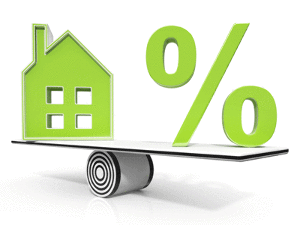

CoreLogic’s House Price Index (HPI) shows the annual rate of growth rose to 20.5%, up from 18.4% last month.
However the annual measure is impacted by base effects, where a year ago economic activity, including the housing market, had stalled as the nation moved through the Covid related lockdowns.
Research head, Nick Goodall, says “In the past few weeks both the Government and RBNZ have released house price forecasts with expectations of a significant reduction in growth over the coming months.
The HPI, which analyses a rolling three months of sales data, provides some evidence of this, while analysis of CoreLogic preliminary sales data goes a step further, illustrating the most recent sales are not performing at the same level as those earlier in the year.
“This reflects the impact of both the tightened loan-to-value ratio (LVR) restrictions, imposed by the Reserve Bank, as well as the Government’s phasing out the ability for property investors to deduct their interest expenses from their end-of-year tax returns.
“While these changes have caused some investors to sit back and take stock of their portfolio, it appears this pull-back in demand has been mostly made up for by other investors, likely with less debt, and owner occupiers who had previously missed out while competing in a very heated market,” says Goodall.
Similar sentiments
Independent economist Tony Alexander and REINZ’s June survey of agents in the market shows similar sentiments to CoreLogic’s HPI.
Investors are still in a wait-and-see mode and the number who might have considered selling has dropped over the month, Alexander says.
“It is difficult to say anything other than that things still seem to be in a holding pattern, perhaps as clarification is awaited on the rules surrounding the definition of a new build in particular, or investors are perhaps simply taking a breather after the frenzy between August and March.”
A net 63% of agents reported seeing fewer investors in the housing market – the same result as a month ago.
“The negative outcome tells us that investors have reacted strongly to the combined impact of an LVR requiring a minimum 40% deposit, and planned removal of interest expense deductibility,” says Alexander.
LVR restrictions bite
Meanwhile, Goodall says if the pipeline of potential buyers remains relatively full, the official forecasts of a sharp reduction in value growth may prove slightly dramatic, but CoreLogic has historic precedence in its data to compare it to.
”When investor LVR restrictions were adjusted in October 2016 – requiring a 40% deposit for investors – the rate of quarterly value growth reduced almost immediately, from 5.1% at the end of September 2016 to 1.2% at the end of March 2017 and 0.3% by September 2017.
This time around, says Goodall there are additional challenges including a reduction in demand as affordability constraints become more challenging.
“The aggregate effect of these changes is likely to result in a further slowdown in the pace of house price appreciation.
“Further adding to the complexity, we are also now navigating a changing environment when it comes to the interest rate outlook.
“As the Reserve Bank forecast in its latest Monetary Policy Statement, the next move for the official cash rate (OCR) is expected to be up, albeit in a year’s time, but this is likely to weigh on buyer attitudes with regards to taking on large sums of debt.
“Bank serviceability tests, at higher interest rates, do provide a form of cover for this however.”
Interest rates
Alexander and REINZ’s survey, for the first time, included a question on investors’ views about rising interest rates. Just 13% of agents say it is the main concern of buyers, making it the second lowest area of concern after employment and income.
“Given the volume and pace of recent change as well as an ever evolving outlook, we now expect policy makers to await more information and data before intervening further.
From the RBNZ’s perspective, debt-to-income (DTI) limits are the most likely tool to be considered next. For now, the RBNZ is unable to regulate the market using this tool, but it has provided analysis to Finance Minister Grant Robertson on their potential implementation.
The regions
Property values in tourism hotspots Queenstown and Rotorua increased by 3.9% in May, a continuation of recent strength as the economic confidence for these centres improves.
These increases were helped by the opening of the trans-Tasman bubble as well as the $200 million tourism package announced by Tourism Minister Stuart Nash.
The package, is designed to help the embattled industry cope with the economic loss of international visitors and prepare for a reshaped future.
Meanwhile property values in our easternmost city of Gisborne have continued on their recent strong momentum, with the annual rate of growth hitting 36% – the strongest rate in over 15 years.
Similar consistency of growth has also been notable in Whanganui, Kāpiti Coast and Palmerston North, which recorded annual growth rates above 34%.
These are all record rates of value increases respectively for at least the past 15 years.
| « Treasury’s house price claims debunked | Housing sales drop, prices race ahead » |
Special Offers
No comments yet
Sign In to add your comment

© Copyright 1997-2025 Tarawera Publishing Ltd. All Rights Reserved